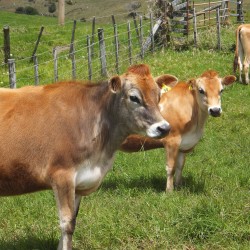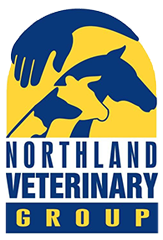We have had some very hot days recently so it is time to remind ourselves about the impact that heat stress has on milk production.
Although cows cope well with temperatures below freezing point, and lactating cows can handle minus 30 deg C, they do not handle continual high temperatures, or humidity very well. Cows prefer temperatures less than 20 deg C (generally less than 15 deg), so Northland summers are stressful on the cows.
Cows cool themselves by evaporation by transferring heat to moist air in the lungs, which is breathed out, and by dilation of blood vessels in the skin. Thus, in hot humid weather cows become heat stressed, dry matter intakes fall (at a time when pasture quality may also be decreasing), food conversion efficiency declines and expected production responses may not occur.
Factors other than temperature and humidity also play a part. High sunlight intensity and lack of air movement make the stress worse, while access to shade and good quality water lessen the stress.
Higher producing cows generate more metabolic heat to make milk than lower producers, and require more water and dry-matter intakes to do so. Hence these girls are the first to suffer.
Low feed digestibility, high NDF fibre – which causes more heat generation to digest than good-quality pasture – along with poor rumen function, and high pasture endophyte levels, all contribute to heat stress. Likewise, feed supplements that are either too dry, too bulky, have high NDF fibre or are too “hot” (eg grain-based concentrates) add to heat stress.
Long walks to the dairy on hot afternoons, and too many animals packed onto the yard or feed pad also add to the problem.
Signs
– Increased respiratory rate (to remove extra heat) – panting, breathing through the mouth and abdominal breathing (when flanks move in and out a lot with each breath).
– Drooling causes excessive fluid loss, preventing the cow from regulating her body mechanisms, and makes it hard for her to chew cud.
– Hair stands on end – part or whole body. Ergovaline (endophyte) will cause this.
– Depressed dry matter intakes. By eating less the cow is attempting to reduce heat production, and if hot they are even less motivated to eat.
– Decreased rumination and cud chewing – a result of decreased dry matter intakes.
– Cooling – seeking shade, wallowing in mud, swimming in dams, standing in water (troughs sometimes!).
As a result of the above, cows loose body condition, reduce production, may have changed milk composition, and depressed reproductive performance.
Prevention
– Shade!
– Good water supply (quantity and quality) –ensuring adequate access to troughs (dominant cows may “guard” troughs preventing others getting access).
– Short lush high quality pasture (faster rounds to achieve this). Low NDF in this pasture may require some added fibre.
– Reduce activity – have cows close to the shed prior to afternoon milking, and move them SLOWLY.
– Timing of feeding and milking – milk, and feed energy dense supplements in the hotter part of the day, when cows are too hot and bothered to eat bulk feed – with adequate cooling – so cows can eat the bulk of their diet in cooler hours.
– Cooling: Fans and / or water sprinklers in dairy yard, (water must RUN OFF the cows, simply wetting them only increases humidity, making things worse). A fan and mister system that reduces the temperature by 1 degree C will give an extra 2 litres milk / cow / day!
– Reduce animal density – allow more yard space per cow at milking times.
– Increase energy and nutrient density in their diet.
– Avoid stop-start feeding (adversely affects rumen function) .
Feeding To Reduce Heat Stress
– Reduce bulk
– Avoid “hot diets” ie highly fermentable feeds which cause an acid load (kiwifruit, potato, highly processed grains)
– Increase energy density: Protected fats are good, along with vegetable or frying oils, whole oil seeds, palm kernel, soya – all of which do not adversely affect rumen function. Rumen active slower fermenting starches are also useful.
– Bypass proteins: eg soy, protected amino acids.
– Physically effective fibre: this is required, but only minimal amounts – chopped cereal straw is good, lignified grass is not!
– Crops – Barkant turnips are excellent, but need to be eaten off from between day 70 and 110 post planting – ie feed 1/40 crop per day. It is important to feed enough to make a difference – a MINIMUM of 3 kg DM for a Jersey, 6 kg DM / day for big black & whites.
– Water: Wet feeds are more palatable than dry feeds

